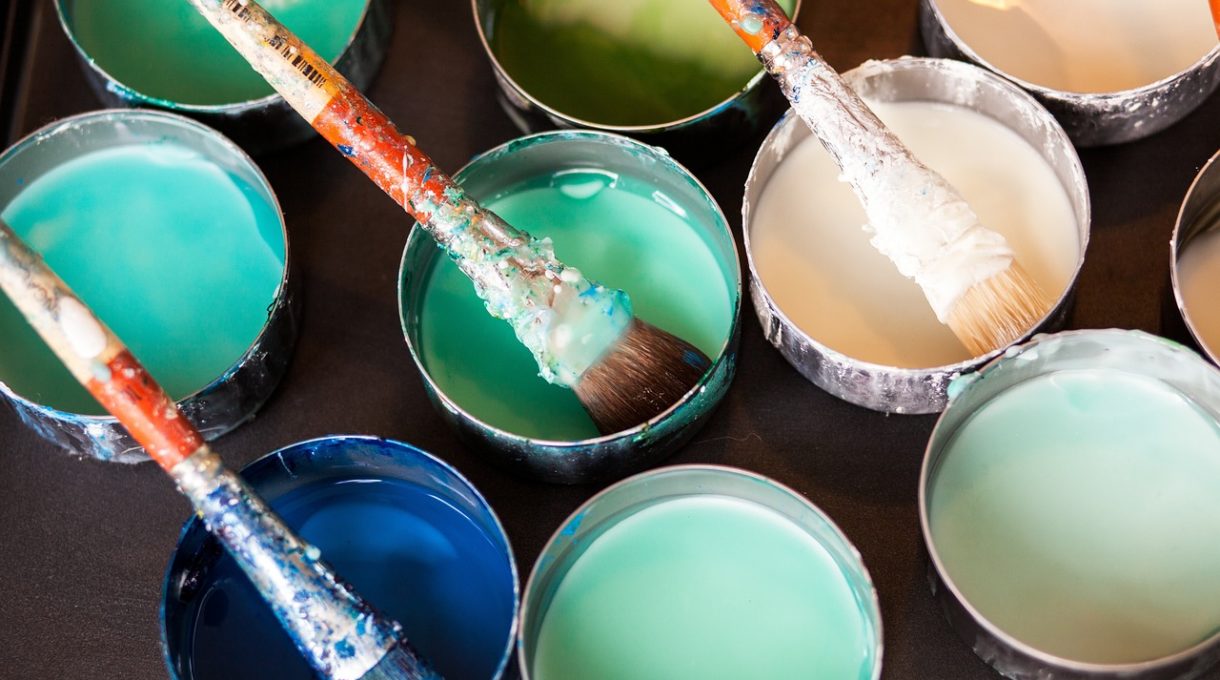Painting is not an easy job, particularly due to weather complications. As such, it’s important to learn tips and techniques for painting in high humidity or extreme temperatures!
Understanding the impact of humidity and temperature on painting
Understanding the impact of humidity and temperature on painting is crucial to achieve satisfactory results. High humidity can lead to paint drying issues, causing it to take longer to cure and potentially resulting in poor adhesion. On the other hand, extreme temperatures can affect the application process, making the paint dry too quickly or preventing it from spreading smoothly. When faced with unfavorable conditions, you may encounter problems like brush marks, streaks, or uneven drying. Additionally, if you’re picking up after a bad contractor who didn’t consider these factors, you can expect to be forced to fix the mess left behind. To avoid such complications, it’s important to research and select the right type of paint for the conditions, adjust application techniques accordingly, and plan your painting project around the most suitable weather.
If you understand the impact of these issues, you can pick out the best paint possible!
Preparation and planning
Preparation and planning are essential when painting in high humidity or extreme temperatures. Before starting your project, research the ideal weather conditions for painting and watch local forecasts to select the best time. Inspect and prepare the painting surface thoroughly, ensuring it is clean, dry, and properly primed. Furthermore, gather all the necessary tools, including brushes, rollers, and protective gear, to avoid interruptions during the painting process. It’s also important to have adequate ventilation in the working area and to consider using dehumidifiers or fans if needed. Plan your work in individual sections to maintain control over drying times and to achieve better results. Lastly, just remember to stay safe by wearing protective clothing, gloves, and goggles and working in a well-ventilated area to minimize exposure to paint fumes.
Adjusting painting techniques for high humidity
When painting in high humidity, it’s crucial to adjust your techniques to ensure optimal results. First, choose a paint specifically designed for humid conditions. These paints often contain additives that help with better drying and adhesion. Appropriately thinning the paint can improve its application, allowing it to spread more evenly and preventing it from becoming too heavy. You can also consider using slow-drying additives or extenders to counteract the accelerated drying caused by humidity.
Techniques for painting in extreme temperatures
Painting in extreme temperatures requires specific techniques to ensure successful results. Firstly, adjust your application methods according to the current weather. That lets you avoid direct sunlight or extreme heat that can cause the paint to dry too quickly. Cooling techniques like misting the surface with water or working in the shade also extend the working time of the paint. It’s further important to consider insulation techniques to protect the paint from freezing or excessive heat. You can do things such as using insulated covers or blankets. Finally, as the experts from fairfaxtransfer.com point out, you must also figure out safe storage for all your items and paints for the project’s duration.
When painting in high humidity or extreme temperatures, keep your tools and supplies out of direct sunlight.
Tips for achieving optimal results
There are several tips to keep in mind to achieve optimal results when painting in high humidity or extreme temperatures. First, working in smaller sections allows you to control drying times and ensures a more consistent finish. Furthermore, consistently monitoring paint consistency and viscosity throughout the project helps you achieve smooth application. And even avoid issues like drips or streaks! Applying thin coats and allowing sufficient drying time between layers promotes better adhesion and minimizes the risk of cracking or peeling.
Additionally, properly storing and handling your paint supplies, such as closing containers tightly and storing them in a cool, dry place, helps maintain their quality and usability. Lastly, keep practicing and experimenting with different techniques and styles to grow as a painter. Each project is, after all, a unique opportunity to learn and refine your skills.
Troubleshooting and problem-solving
Troubleshooting and problem-solving are essential skills when it comes to painting. So, if you encounter common issues like blistering, cracking, or poor adhesion, it’s important to address them promptly. One effective strategy is to identify the root cause of the problem. Whether it’s improper surface preparation, using incompatible paint products, or applying paint in unsuitable conditions, understanding the underlying issue helps you find the right solution. Seek professional advice if you’re facing severe challenges requiring expert knowledge and your experience is still lacking! They can guide how to rectify the problem and prevent future occurrences, which always helps you improve. Finally, document any issues and the steps taken to resolve them, as this can serve as a valuable reference for future projects. That is especially true when just starting since you can’t lean into instinct or experience.
Remember to take regular breaks if painting outside, too!
Working to overcome weather issues
With our tips and techniques for painting in high humidity or extreme temperatures, we know you’ll improve as a professional! After all, as long as you take the time to plan and prepare properly, no project is impossible.

